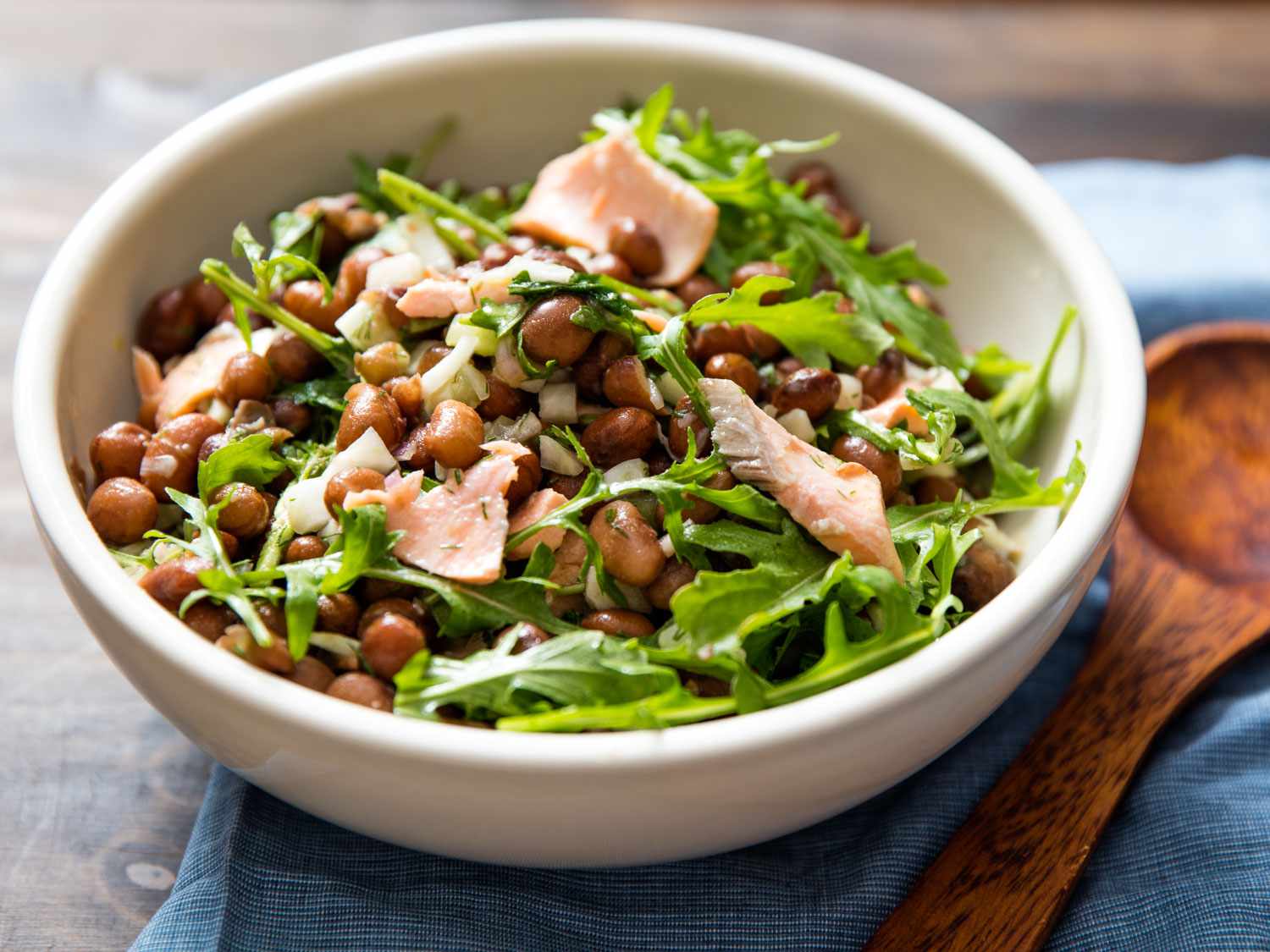
[ad_1]

Why It Works
- Cold-start poached salmon is juicier and more tender than salmon cooked following the traditional simmering method.
I know that in the canon of salmon-preparation methods, poaching is pretty far down most people’s lists. Why, after all, would you choose to eat simmered fish when you can enjoy it with a beautiful seared crust courtesy of pan-roasting or grilling, or cured with salt and spices à la gravlax, or smoked, or broiled, or raw on a piece of sushi?
I actually think there are several good reasons for poaching. First, poaching produces one of the juiciest pieces of salmon imaginable, thanks to gentle cooking in a liquid medium. Second, it also leads to one of the most delicately flavored pieces of salmon possible, allowing you to appreciate the fish’s true flavor, with little else covering it up. (This can be a problem if the salmon tastes like mud, common in poor-quality farmed fish.) Third, it’s easy, requiring very little technical skill to do. And fourth, it’s not prone to making your kitchen smell strongly of fish, the way pan-roasting or broiling can.
Poached salmon is great straight from the pot, but it’s also great chilled and served as a light warm-weather dinner with a simple sauce, or shredded and mixed into spreadable rillettes. But the versatility of poaching doesn’t end there: Thanks to its easy, clean flavor and gentle touch, it’s one of the best cooking methods for salmon that you flake and mix into something, like the big, filling salad I’m sharing here.
I love all kinds of salad, but at home, hearty salads that function as entire meals are almost exclusively the kind that I make. The key is to load them with a good mixture of ingredients, including plenty of greens and/or other vegetables, at least one source of protein, and enough fat to leave you sated. That’s what I was aiming for here, mixing together peppery arugula, plump cranberry beans, and tender pieces of salmon.
It’s very easy to make. Start by cooking the beans, or pop open a few cans if you don’t have time to deal with dried ones. Then poach the salmon fillet, which I like to do using a cold-start method. Unlike traditional poaching, in which the fish is lowered into simmering water, cold-start poaching calls for adding the salmon to the water while it’s still cold, then gently bringing them both up to temperature together. It’s best not to let the water reach a full simmer, since that’s much more heat than the salmon needs—you’ll get slightly tougher fish that way. If you have an instant-read thermometer, a good temperature for the water is about 170°F; if not, just below a simmer is fine.
As soon as the salmon hits about 115°F in the center, it’ll be medium-rare, which is done enough for me. Then I remove it from the poaching water and let it chill briefly in the fridge.
Once that’s all done, you can toss the salad together. I throw in some diced celery and fennel, along with a basic vinaigrette made with shallot, lemon juice, and olive oil. A small amount of minced dill adds an herbal touch. It’s best to combine all the ingredients except the salmon first, and then gently mix the salmon in at the end. Otherwise, all that stirring will break up the flakes into little shreds; not the end of the world, but a little less attractive.
It may not be the most popular method, but the more I cook salmon with it, the more versatile I realize poaching is.
May 2016
[ad_2]